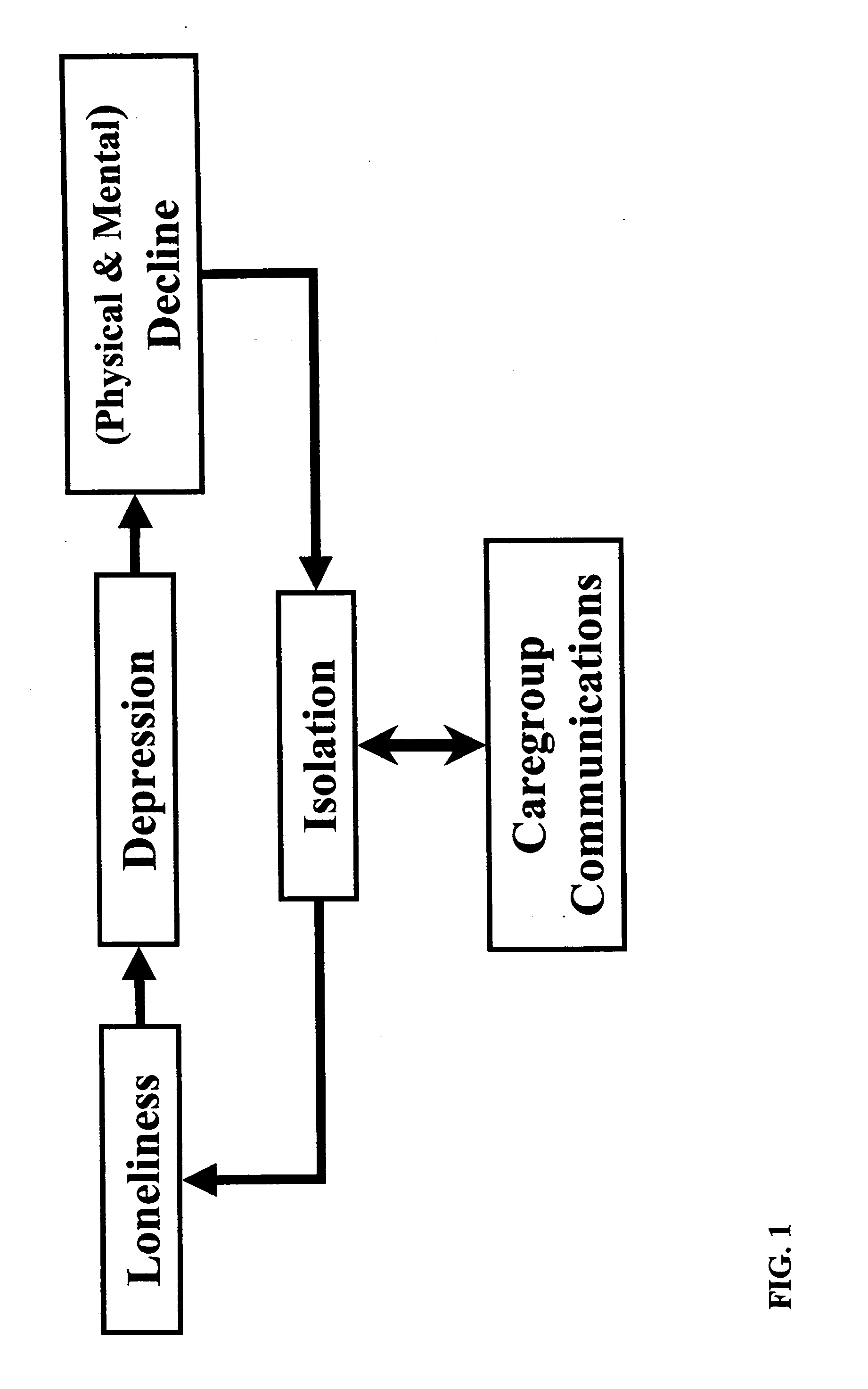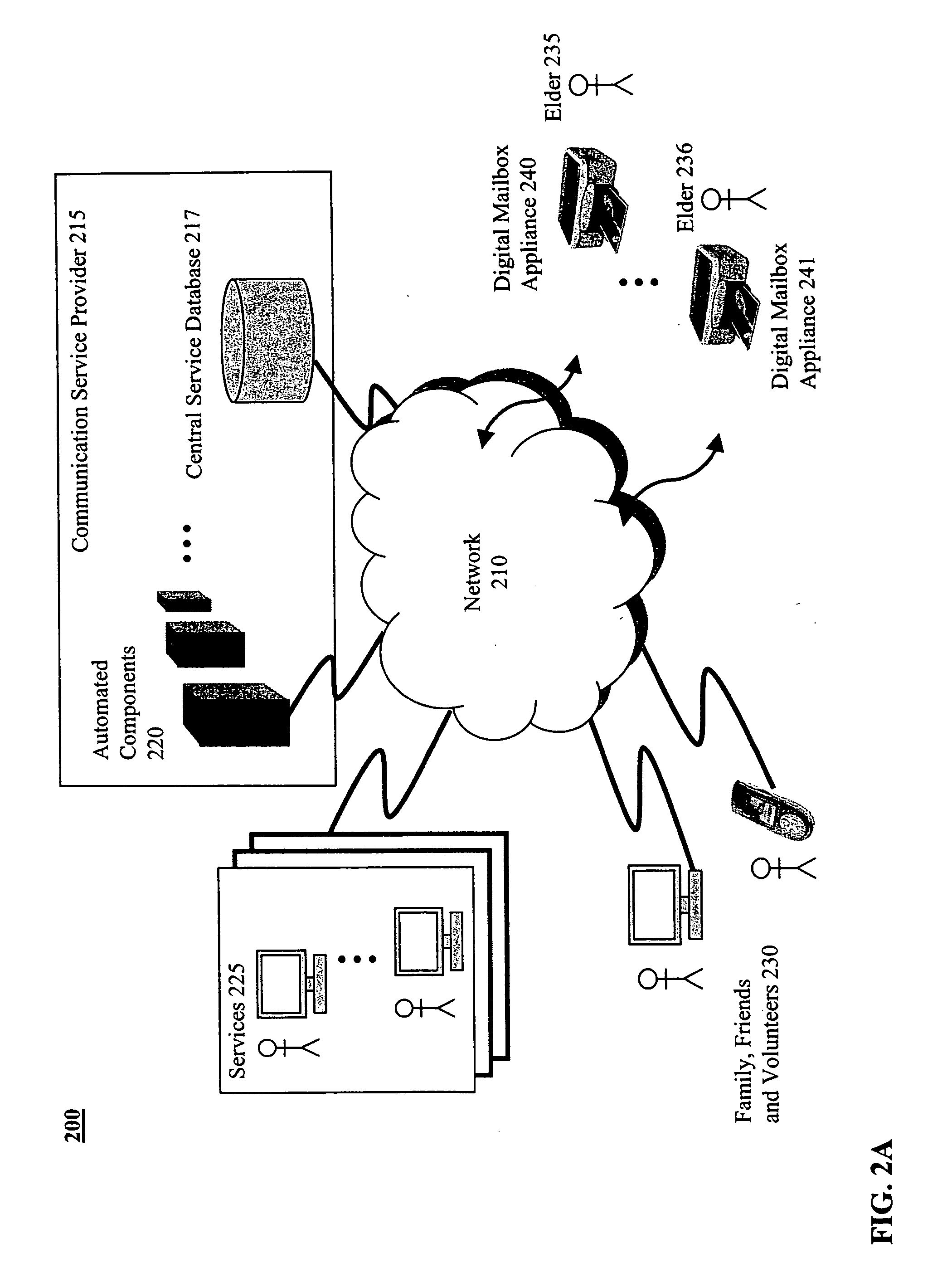Use of a closed communication service for social support networks to diagnose and treat conditions in subjects
a social support network and closed communication technology, applied in the field of diagnosis and treatment of mental disabilities or illnesses, physical illnesses, injuries, etc., can solve the problems of lack of social interaction, increased social isolation and accompanying feelings of loneliness, increased risk of subsequent physical illness, disability, premature death, etc., to facilitate and encourage one or more of affective communication, and improve well-being.
- Summary
- Abstract
- Description
- Claims
- Application Information
AI Technical Summary
Benefits of technology
Problems solved by technology
Method used
Image
Examples
examples
[0358] As a result of the flexibility provided by the various embodiments of the communication system and methods described herein, it should be appreciated that it is not feasible to comprehensively describe all possible usage scenarios and interactions between or among the participants. Consequently, while various treatment and diagnosis examples are provided below in order to facilitate understanding of the flexible nature of the described communication system, the examples should not be considered to be all-inclusive or static. Furthermore, the examples should not be considered mutually exclusive.
example # 1
Example #1
Coaching Physical Therapy
[0359] The assignee of the present invention observed during a field trial that one of Elder A's daughters was sending him bawdy barroom style jokes. This had not been a previous characteristic of their interactions so it was investigated. It turns out that she was sending the jokes for Elder A to use with his fellow ‘senior guys’ at Physical Therapy sessions. Elder A had become ‘mister joke man.’ Interviewing the daughter, it turns out she was doing this to remotely encourage (and monitor) Elder A's attendance at physical therapy. The jokes not only gave Elder A a kind of social currency and status at physical therapy but also gave his daughter an excuse to find out how the ‘boys’ liked it thereby checking in on Elder A's attendance at an activity that heretofore he had eschewed. The daughter was both enabling and coaching Elder A's attendance in a socially acceptable manner without appearing to nag. The precursor communication system made the fi...
example # 2
Example #2
Alertment
[0360]FIG. 37 is a graph illustrating a sample plot of an elder's response rate over time. Within one embodiment of the closed communication system, family members are provided with the ability to observe both the frequency of elder responses to various types of inquires as well as the quality of the responses (both the handwriting as well as the substance of the missive—humor, wit, . . . etc.). Because the missives are archived, they are easy to count over time as well as permitting specific examination. So, observations regarding increases in the micrographic nature of the elder's handwriting might be indicative of onset or worsening of Parkinson's disease. Decreases in the number of responses as shown in the response rate graph 3800 or a “flattening” of the content might warn family members of the approach of a depressive state or cycle. Consequently, a drop off in responses (quantity and quality) with respect to one individual or in the aggregate may indicate...
PUM
 Login to View More
Login to View More Abstract
Description
Claims
Application Information
 Login to View More
Login to View More - R&D
- Intellectual Property
- Life Sciences
- Materials
- Tech Scout
- Unparalleled Data Quality
- Higher Quality Content
- 60% Fewer Hallucinations
Browse by: Latest US Patents, China's latest patents, Technical Efficacy Thesaurus, Application Domain, Technology Topic, Popular Technical Reports.
© 2025 PatSnap. All rights reserved.Legal|Privacy policy|Modern Slavery Act Transparency Statement|Sitemap|About US| Contact US: help@patsnap.com



